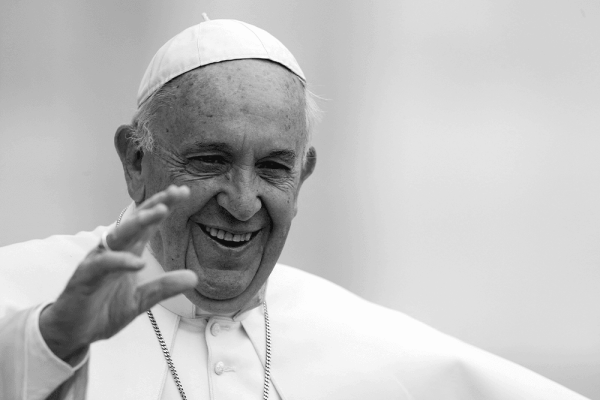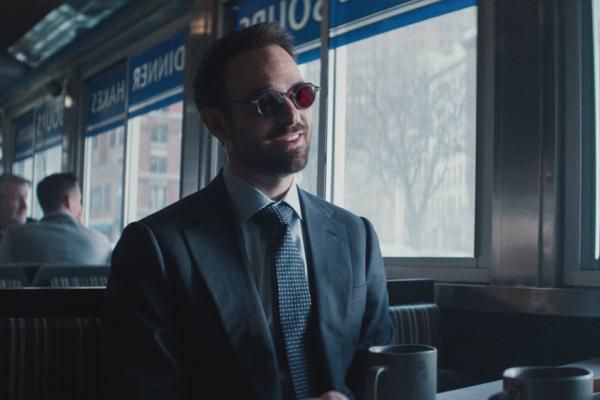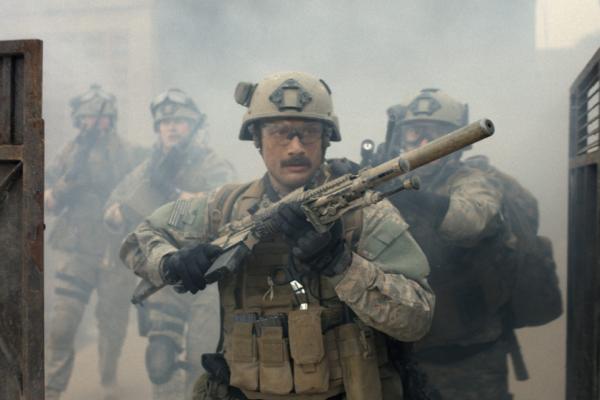My father used to make me and my three siblings walk in the pitch-black dark of our Alabama suburban woods without a flashlight. As a former Eagle Scout and Navy midshipman, he sometimes pushed us slightly out of our comfort zones: spending Good Friday in silence as a family, jumping off bridges into deep rivers, and walking through the woods in the dark.
“If you watch and wait, your eyes will adjust to the dark,” he said, “And you’ll be able to see without a light.”
My father explained that we would each travel along the circular path in our forested backyard. The trail started at our house, followed the contours of a wooded hill to Rock Creek, which emptied into Mobile Bay, and then climbed up the hill by a small gully, ending at the clementine tree under the laundry line.
With a deep breath, I stepped forward into the moonless night, my heart beating fast, my eyes focused on the black haze before me. I paused for a few seconds, waiting for the gift of sight under the thick canopy of oak trees, which hid the stars in the sky. I could feel the muscles moving in my eyes, which burned with a sensitivity that brought no pain.
My right hand brushed against skeletons of trees that seemed animated although they stood still as sentinels. Feeling the rough bark on my palm, my body somehow relaxed into the journey, even as I encountered stumps on the trail or sticks beneath my feet. This isn’t so bad, I told myself. I am learning to walk in the dark.
Decades later, I would read Barbara Brown Taylor’s book by this same title, Learning to Walk in the Dark, an exploration of the spirituality of the nighttime, of dark emotions, fear of failure, and loss of faith. As she writes, “I have learned things in the dark that I could never have learned in the light, things that have saved my life over and over again, so that there is really only one logical conclusion. I need darkness as much as I need light.” At the end of the trail by the clementine tree, I could not see that my father was preparing me for the darkness ahead, the inevitable losses of any life, and even the political times in which we live, although he is no longer alive.
* * * *
“How does it feel to sit in the dark?” asks the Rev. Milly Morrow in the pulpit of All Soul’s Episcopal Church during the Easter Vigil service, the evening before the arrival of Easter baskets, smocked Sunday dresses, and overflow seating in the church library.
This night is tender — dark and sacred — almost like a cloistered gathering of those who choose to bear witness to the resurrected Christ in a late-night service with readings of the creation story, Israel’s deliverance at the Red Sea, and the Valley of Dry Bones. When my children are with me on Easter weekend, I attend the gala affair of Easter morning service, but when they are with their father, I prefer the subdued, but somehow more stupendous service that inevitably moves me to tears at times I can’t anticipate.
How does it feel to sit in the dark? At the moment, I am wishing that I’d brought my reading glasses, as I can’t see the words to the hymns in the dark. But I feel comforted by the congregation of mostly older folks, with a few exceptions: A young boy sleeps on his father’s shoulder as the service coincides with his bedtime. In the pew behind me, I glimpse a teenager whose siblings and father are all serving as acolytes: They will light the candles after the baptism and signal that the fire, the light within us, is now outside us as well.
As she speaks in a voice measured but forceful, Milly challenges us to hold the tension between vulnerability and vigilance in dark times. “We must learn to be vulnerable, she says. “But at the same time, we must be vigilant in the dark.” She reminds us that new life — from a cave or from the womb — comes from the dark and from discomfort, not ease. We must tap into that internal fire, the light that comes from the Holy Spirit.
With these words, she gives a nod to the woman who will be baptized within moments: The candidate for baptism sits in the front pew, wearing a breezy floral dress, with a silver cross lying against her very pregnant belly, as if she might bring forth life at any minute.
Holding the tension between vulnerability and vigilance — staying open but watchful — seems like solid advice for me, too, as a parent of teens and a teacher of college students. Without much intention, I am trying to navigate our times with activism that doesn’t reek of self-righteousness, fighting for justice without missing the springtime in my front yard. Indeed, right before church, I made myself stop obsessing about the headlines to watch newborn lambs chase each other in the pasture in front of my small duplex on campus. I felt like I was seeing them for the first time, as if my eyes had adjusted to the present.
In the sanctuary as we pass the peace during the Easter Vigil, the teenager from the back moves next to me, joining another woman in my pew. Our young friend has tears streaming down her face, from a loss that we don’t have to understand to acknowledge. Much like mother sheep protecting a lamb, we both move closer to her, offering a hand, an arm around her shoulder, small gestures of solace.
The linens have been returned to the bare table, the bright banners are now standing tall, the flowers are bursting in their vases. The sanctuary that was stripped on Maundy Thursday is vibrant with color and life. The transition feels both abrupt yet timely. Bells ring and voices sing He is risen!, and yet, a teen is crying, real tears, deep loss. For now, we sit together, moving through the prayers and song, our bodies close. For tonight, that is enough.
We can be a vulnerable and vigilant people, tender-hearted yet watchful for opportunity as well as danger, filled with light and love, even in the dark.
Got something to say about what you're reading? We value your feedback!







